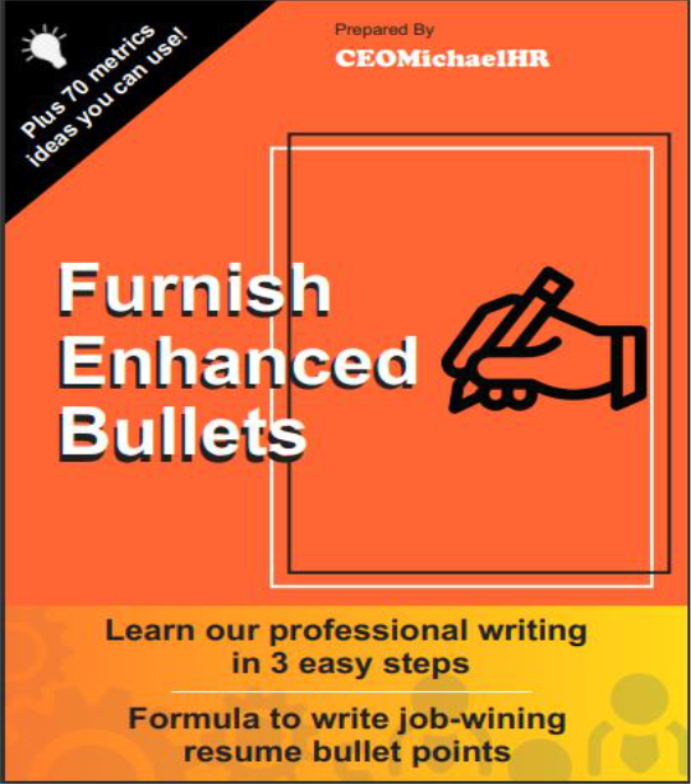
New clients, unlock 10% off all plans 🔥 at checkout with code: CEO10SPECIAL (Limited Time Offer)
New clients, unlock 10% off all plans 🔥 at checkout with code: CEO10SPECIAL (Limited Time Offer)






Crafting a strong resume is an essential step towards landing your dream job. However, creating a standout resume from scratch can be a daunting task.
That’s where a resume outline can come in handy.
A resume outline is a tool that helps you organize and structure your resume content before you start writing. By outlining the key sections of your resume, you can save time and effort while ensuring that your resume highlights your relevant skills and experiences.
In this article, we’ll explore what a resume outline is, what key parts you should include, and how to use your outline to create a winning resume.
So, let’s dive straight in!
A resume outline is a structured plan that serves as a blueprint for creating a well-organized and effective resume.
It typically includes the key sections and details that are necessary for presenting your skills, experience, and qualifications to potential employers.
The benefits of having a resume outline are numerous. Firstly, it helps to ensure that you do not miss out on any essential information that you need to include in your resume.
It also helps to keep your resume organized and focused, which can make it easier for recruiters and hiring managers to read and understand.
Moreover, creating a resume outline can help you to save time and avoid unnecessary stress when writing your resume.
By breaking down the resume creation process into manageable parts, you can approach each section systematically and complete your resume in a more efficient and effective manner.
Generally, a resume outline can be an incredibly useful tool for simplifying the resume creation process and ensuring that you create a well-crafted and impactful resume that stands out to potential employers.
Your resume outline should include the following six key parts:
Header: The header is the topmost part of your resume and should include your name, contact information (email, phone number, and address), and a link to your professional online profile (if you have one).
Professional summary: The professional summary is a brief statement (3-5 sentences) that summarizes your skills, experiences, and career goals. It should be tailored to the job you are applying for and highlight your unique selling points.
Work experience: This section should list your previous job positions, starting with your most recent or current job. For each position, include your job title, company name, employment dates, and a bulleted list of your key accomplishments and responsibilities.
Education: This section should list your highest degree first, followed by other relevant education and certifications. Include the name of the institution, degree/certification earned, and the date of completion.
Skills: This section should list your relevant technical and soft skills. Examples of technical skills include proficiency in software programs or languages, while examples of soft skills include communication, leadership, and problem-solving.
Additional sections: Depending on your career goals and experiences, you may want to include additional sections, such as certifications, awards, publications, volunteer work, or professional associations. These sections can help demonstrate your unique qualifications and make you stand out to potential employers.
Note that these key parts are just a starting point for your resume outline. You should tailor your outline to the specific job you are applying for and highlight the experiences and skills that are most relevant to the position.
Find out: The Top 10 Resume Mistakes That Could Cost You the Job
When creating your resume outline, it’s important to keep in mind that there are certain things that you don’t need to include.
Here are a few examples:
Information that is not relevant to the job you are applying for: It’s important to tailor your resume to the specific job you’re applying for. Including information that is not relevant to the job can make it harder for the hiring manager to quickly see why you’re a good fit for the position.
Personal details: While it’s important to include your contact information, you don’t need to include personal details such as your marital status, age, or ethnicity. These details are not relevant to your qualifications for the job.
References (unless explicitly requested): It’s not necessary to include references on your resume unless the job posting specifically asks for them. Instead, you can simply state that references are available upon request.
By leaving out unnecessary information, you can keep your resume concise and focused on what matters most- your qualifications for the job. This can help you stand out to hiring managers and increase your chances of landing an interview.
Find out: How to Make Your Resume Stand Out: Real Examples
A resume outline can be helpful in organizing your thoughts and information, but it can be difficult to know where to start.
Here is an example of a resume outline with all the key parts included:
I. Header
II. Professional Summary
III. Work Experience
IV. Education
V. Skills
VI. Additional Sections
Note that this is just an example.
Your own resume outline may vary depending on your experience and the job you are applying for.
Use this as a starting point and customize it to your needs.
In the next section, we’ll explore how to use your resume outline to create a complete resume that showcases your skills and experience.
Find out: Combination Resume Guide- With Templates & Examples
Now that you have a solid resume outline, it’s time to turn it into a polished, professional-looking resume.
Here are the steps to follow:
Review job descriptions: Before you start filling in your resume outline, take a look at job descriptions for the types of roles you’re interested in. This will give you a good idea of what skills and experience employers are looking for, and help you tailor your resume to their needs.
Fill in your outline: Use your resume outline as a guide to fill in the details for each section. Be concise and specific, highlighting your achievements and skills that are relevant to the job you’re applying for.
Edit and proofread: Once you’ve filled in your resume outline, it’s time to edit and proofread. Check for spelling and grammatical errors, and make sure your resume is formatted consistently and looks professional.
Get feedback: Ask a friend or mentor to review your resume and provide feedback. They may catch mistakes or suggest ways to improve your resume’s content or format.
Customize for each job: As you apply for different jobs, customize your resume for each position. Use the job description as a guide to highlight the skills and experience that are most relevant to that particular role.
Remember, your resume is often the first impression you make on a potential employer. By using a resume outline and following these steps, you can create a polished, professional-looking resume that will help you stand out in a competitive job market
Find out: The Art of Storytelling in Your Resume: How to Showcase Your Career Journey in a Compelling Way
Now that you know what a resume outline is and how it can help you simplify the resume creation process, it’s time to put it into action.
By following the six key parts outlined in this article and using your own unique experiences and qualifications, you’ll be able to create a professional and effective resume that showcases your skills and expertise.
However, if you’re still struggling with crafting a standout resume, consider reaching out to CEOMichaelHR Resume Writing Service. Our team of expert writers can create a custom resume that is tailored to your unique experience and career goals. With our help, you can rest assured that your resume will stand out among the competition and help you land your dream job.
Don’t let a poorly written resume hold you back from achieving your career goals. Work with CEOMichaelHR Resume Writing Service today to take the first step towards success.
Share
Further Reading
*The names and logos of the companies referred to in this page are all trademarks of their respective holders. Unless specifically stated otherwise, such references are not intended to imply any affiliation or association with CEOMichaelHR.
Land interviews 3x faster while submitting fewer resumes
Copyright © 2025, ceomichaelhr.com.
All rights reserved.
Land interviews 3x faster while submitting fewer resumes
Copyright © 2025, ceomichaelhr.com.
All rights reserved.

Learn the same techniques our expert resume writers have used to get thousands of clients closer to their next job
Unlock expert resume tips, start landing multiple interviews!

Stay connected to receive powerful career insights, updates, and inspiration that’ll help you hit your career goals.